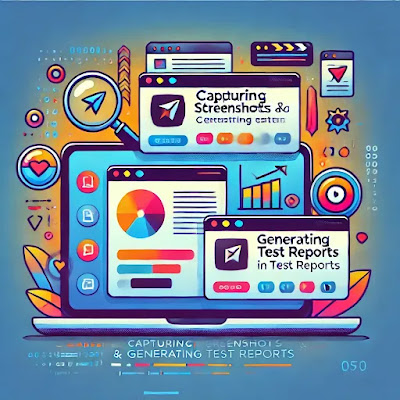Using Playwright Trace Viewer for In-depth Test Analysis
Using Playwright Trace Viewer for In-depth Test Analysis
Playwright has quickly become a popular choice for end-to-end testing, enabling developers to automate testing across different browsers with ease. One of the key features that sets Playwright apart from other testing frameworks is its Trace Viewer. The Trace Viewer allows developers to dive deep into test execution, providing granular insight into every interaction, helping to diagnose issues more effectively.
This article will walk you through the features and benefits of the Playwright Trace Viewer, showing you how to leverage it for detailed test analysis and debugging. Whether you're new to Playwright or an experienced user, this guide will help you maximize the power of the Trace Viewer.
What is Playwright Trace Viewer?
The Playwright Trace Viewer is a powerful tool that captures the entire execution of a test script. It logs every action, including network requests, browser interactions, console outputs, and even the state of the DOM at every stage of the test.
This means that when a test fails, instead of manually stepping through the code to figure out what went wrong, you can simply open the Trace Viewer to replay the test, inspect the state of the application, and trace the failure back to its root cause.
How to Enable Tracing in Playwright
Before you can use the Trace Viewer, you need to enable tracing in your Playwright tests. This is done using the startTracing and stopTracing commands in your test code.
await page.tracing.start({ screenshots: true, snapshots: true });
await page.goto('https://example.com');
// perform actions
await page.tracing.stop({ path: 'trace.zip' });The trace file will capture every interaction and save it in a ZIP archive. You can later load this trace file into the Trace Viewer to replay the test and investigate any issues.
Loading a Trace File in the Playwright Trace Viewer
To view the trace, use the Playwright Trace Viewer command from your terminal:
npx playwright show-trace trace.zipThis will open the Playwright Trace Viewer in your default browser, allowing you to step through each action, view screenshots, and analyze network requests.
Key Features of the Trace Viewer
The Playwright Trace Viewer offers several key features that make it a valuable tool for in-depth test analysis:
- Step-by-step test replay: Revisit every interaction to pinpoint exactly where a test failed.
- DOM snapshots: Inspect the state of the DOM at any point during the test.
- Network requests: View all network requests and responses, making it easier to identify API issues.
- Console logs: See the console output for every step in the test.
- Screenshots: Screenshots are captured at every stage, helping you identify UI issues across different browsers.
Benefits of Using the Playwright Trace Viewer
Using the Trace Viewer can significantly improve the efficiency of your testing process by reducing the time spent diagnosing failures. Here are some of the key benefits:
- Faster debugging: Instead of manually reproducing issues, you can simply replay the trace and pinpoint the root cause of a failure.
- Improved collaboration: Sharing trace files with other developers or QA engineers allows for better collaboration, as the entire test is captured in detail.
- Comprehensive analysis: The Trace Viewer captures everything from network requests to DOM snapshots, providing a holistic view of the test execution.
Integrating Trace Viewer with CI/CD
For organizations with a Continuous Integration/Continuous Deployment (CI/CD) pipeline, Playwright’s Trace Viewer can be an essential tool. By enabling tracing in your CI pipeline, you can capture and review failed tests directly from your CI environment, making it easier to diagnose issues remotely.
Here’s an example of how to integrate tracing into a GitHub Actions pipeline:
name: Playwright Tests
on: [push]
jobs:
test:
runs-on: ubuntu-latest
steps:
- name: Checkout code
uses: actions/checkout@v2
- name: Install dependencies
run: npm ci
- name: Run Playwright tests with trace
run: |
npx playwright test --trace on
Once the tests run, a trace file will be generated for each test. You can download the trace file and load it into the Trace Viewer to analyze any failures.
Best Practices for Using the Trace Viewer
To get the most out of the Playwright Trace Viewer, consider the following best practices:
- Enable tracing only for critical tests: Tracing can generate large files, so enable it only for tests where detailed analysis is needed.
- Automate trace cleanup: Make sure to clean up old trace files to prevent your system from being cluttered with unnecessary data.
- Use tracing in CI/CD only for failures: Configure your pipeline to capture traces only when a test fails, to avoid unnecessary overhead.
Conclusion
The Playwright Trace Viewer is a powerful tool for in-depth test analysis and debugging. By capturing every detail of test execution, it allows developers to quickly diagnose and fix issues, improving the overall efficiency of the testing process.
Whether you are working on small projects or managing large-scale test suites, the Trace Viewer can provide the insights needed to ensure your tests are running smoothly and your web applications are performing as expected.
Start using the Playwright Trace Viewer today to streamline your testing and debugging workflows!




Comments
Post a Comment